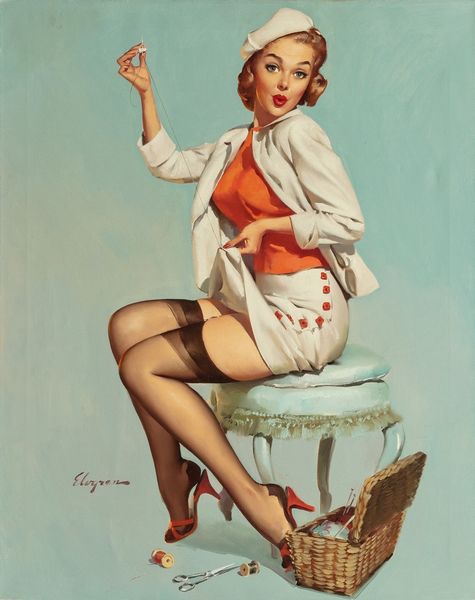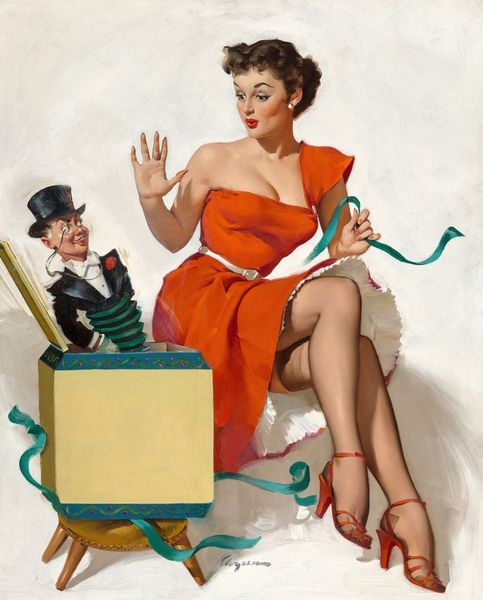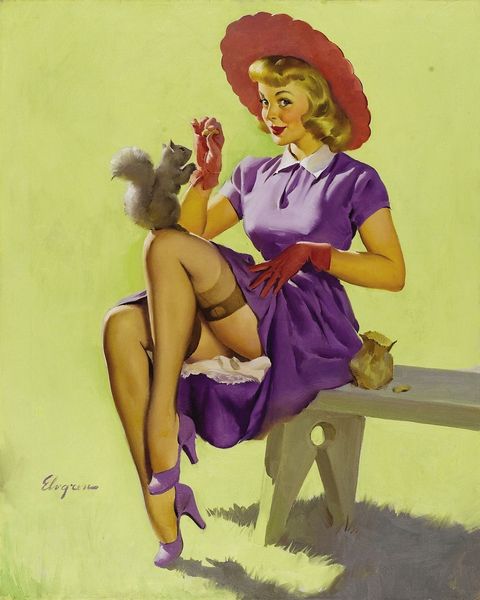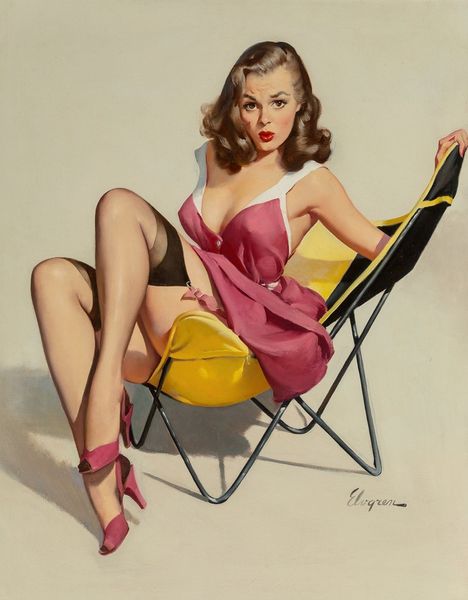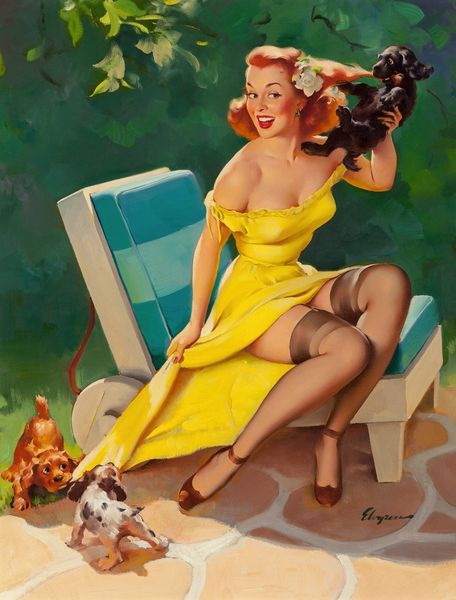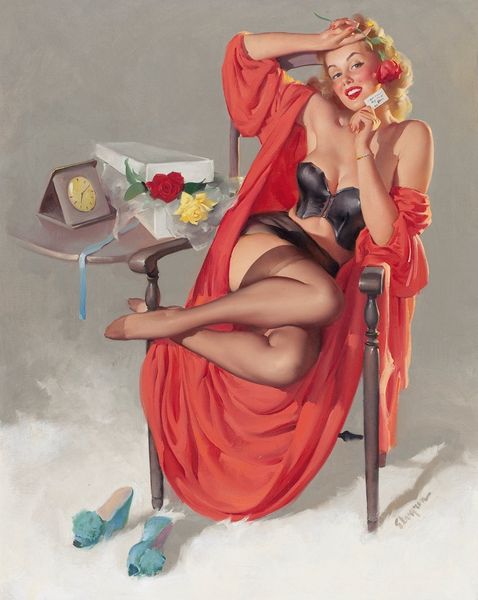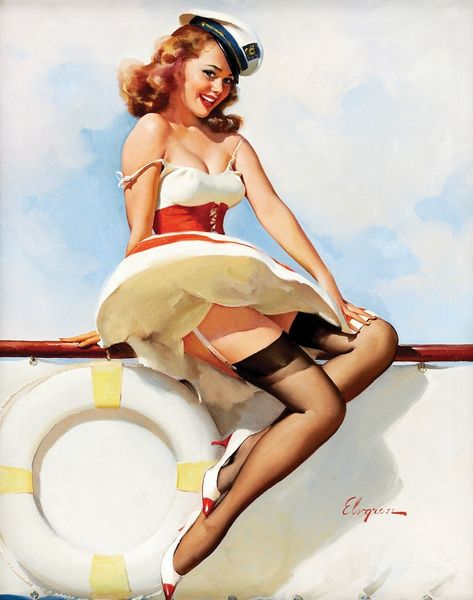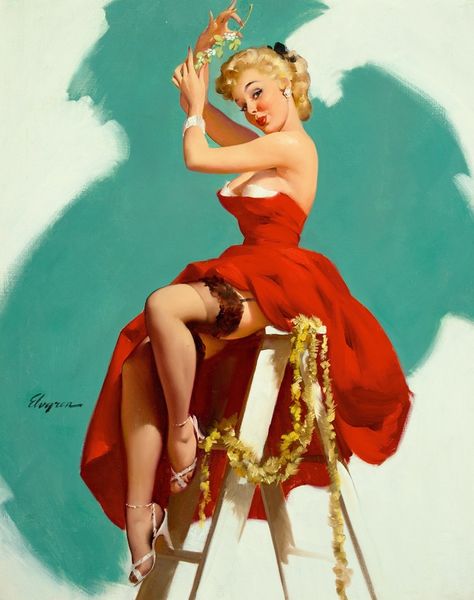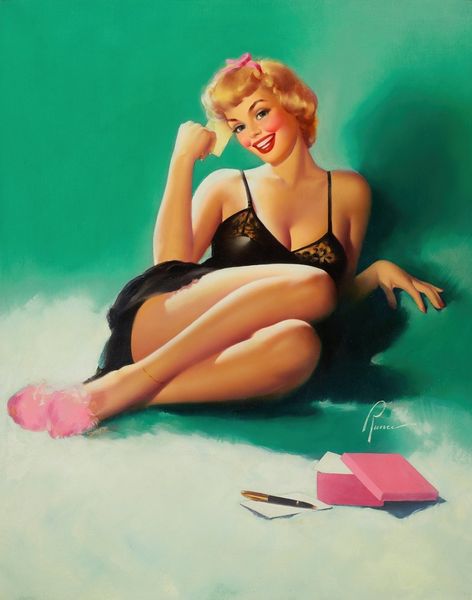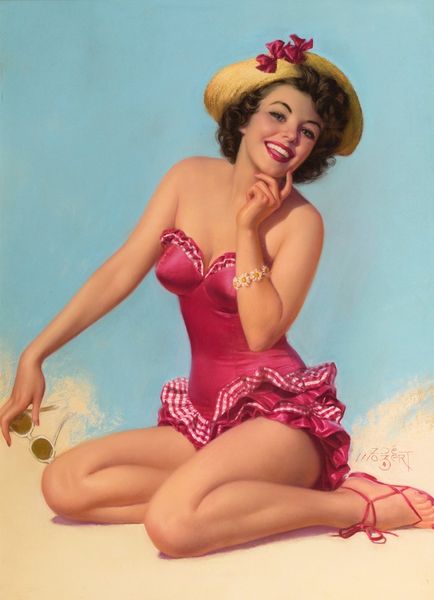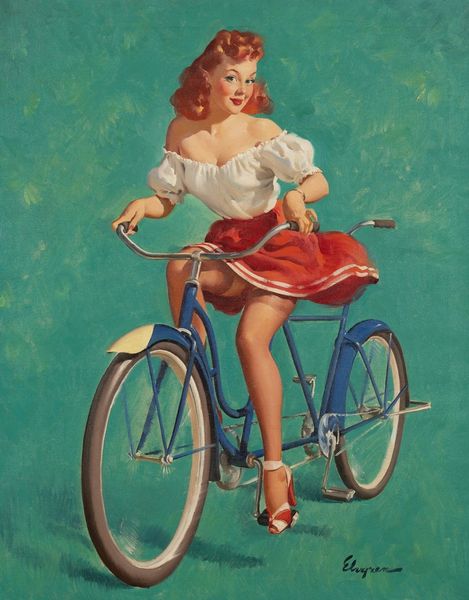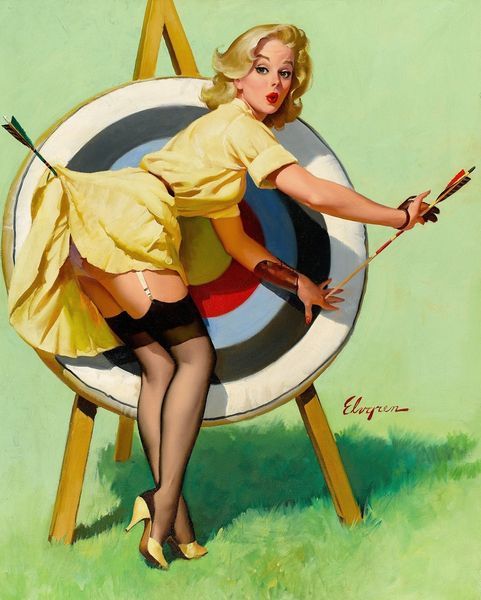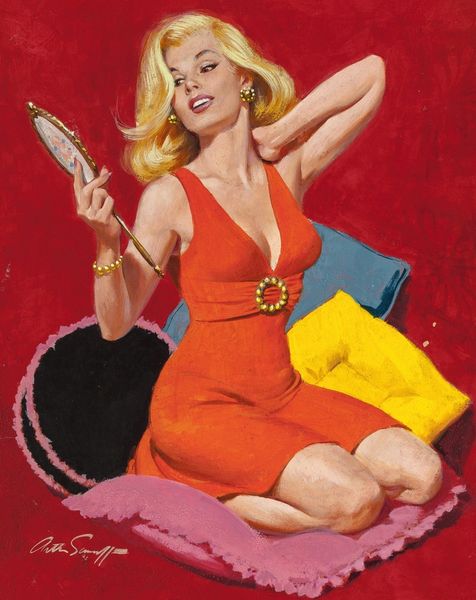
Copyright: Modern Artists: Artvee
Curator: Gil Elvgren’s painting "A Cute Pair," likely created between 1944 and 1947, presents a fascinating vignette of mid-century femininity rendered in oil on canvas. The first thing I noticed is how utterly staged it feels, like a meticulously constructed advertisement. Editor: Staged, yes, but think about the symbols here: the shoes elevated on their circular display shelves like little trophies, a kind of idealized domestic tableau. We have the ritualistic unwrapping, discarding of choices. It speaks of an era obsessed with aspiration, consumerism... and of course, the artifice of feminine presentation. Curator: Precisely! And considering the context of postwar America, the proliferation of images like this normalizes certain beauty standards, encouraging women to find validation in these prescribed gender roles through consumer goods, particularly in fashion items like shoes. This painting exists to further perpetuate unrealistic ideals and sell a lifestyle. Editor: I wonder though, doesn't it also hint at agency? Each shoe tells a micro-story. The red sandal elevated evokes freedom. The green set placed by the giftbox speaks of the domestic everyday life. Then you have a "cute pair" in the hand. It is as if a variety of paths in life are there for the taking. There is potential. She can choose. The colors contribute to a certain narrative. The yellow feels aspirational; but the pink shoe brings to the foreground youth, flirtation. The blue-green of the chair has connotations with freedom. Curator: An intriguing reading. Though, I hesitate to apply 'agency' without acknowledging the broader socio-economic forces at play. It appears she has agency; however, it could be argued that her only allowed sphere of influence is through self-presentation. To really engage with such a seemingly frivolous work like this, it's essential we ask who profits from women being reduced to roles dictated by style. Editor: Point taken. It is always crucial to remember the manipulative element behind marketing narratives such as this one. It’s really interesting how easily we fall back to see symbols with meanings we project. Yet images like these tell so much about what our culture held as valuable—and what it sought to make desirable. Curator: Indeed, what better place to begin interrogating value, desire, and agency than an image that appears, on the surface, merely cute? Editor: Absolutely. Next artwork.
Comments
No comments
Be the first to comment and join the conversation on the ultimate creative platform.
